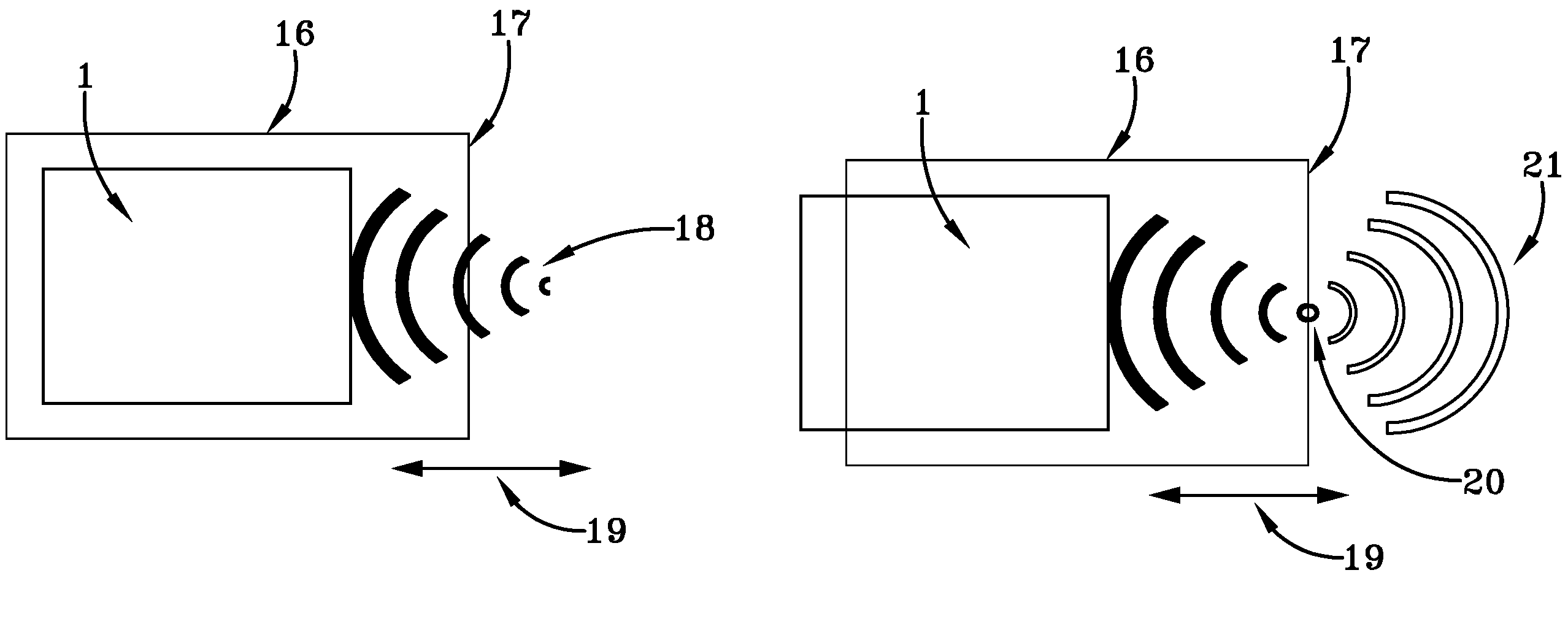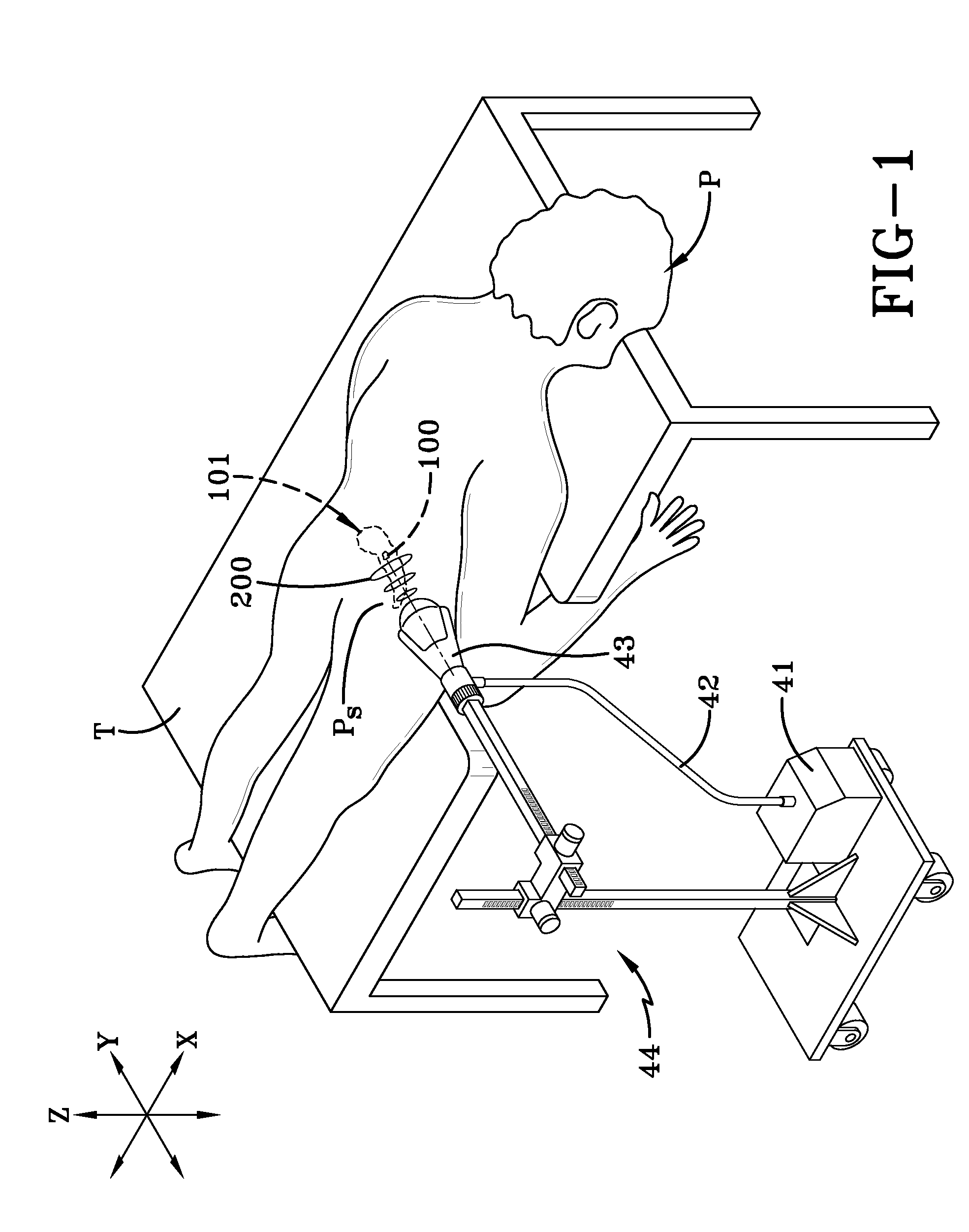Pancreas regeneration treatment for diabetics using extracorporeal acoustic shock waves
a technology of acoustic shock wave and a pancreas, which is applied in the field of treating the pancreas of diabetic patients with acoustic pressure pulse shock wave, can solve the problems of high diabetes financial burden, low economic data, and large health care costs, and achieves high-performance cell therapy and tissue regeneration. , the effect of improving the quality of li
- Summary
- Abstract
- Description
- Claims
- Application Information
AI Technical Summary
Benefits of technology
Problems solved by technology
Method used
Image
Examples
Embodiment Construction
[0064]With reference to FIG. 1, the patient P who has either been diagnosed with diabetes or is at risk of contracting diabetes is positioned on a table T preferably face down lying on the stomach. A shock wave applicator head 43 is brought into contact with the skin Ps preferably an acoustic gel is used to enhance the transmission of the shock waves 200 through the body down to the subsurface tissue 100 of the pancreas 101. The shock wave applicator head 43 is connected via cabling 42 to a power generating unit 41 as shown. The shock wave applicator head 43 can be attached rigidly to a fixture or stand 44 as illustrated or alternatively can be hand held and manipulated across the skin Ps to drive the shock waves 200 in the direction the shock wave head 43 is pointed.
[0065]With reference to FIG. 2 an enlarged portion of the patient P's body is shown directly above the region of the pancreas 101. As illustrated the pancreas 101 is being bombarded with shock waves 200 that are emitted...
PUM
 Login to View More
Login to View More Abstract
Description
Claims
Application Information
 Login to View More
Login to View More - R&D
- Intellectual Property
- Life Sciences
- Materials
- Tech Scout
- Unparalleled Data Quality
- Higher Quality Content
- 60% Fewer Hallucinations
Browse by: Latest US Patents, China's latest patents, Technical Efficacy Thesaurus, Application Domain, Technology Topic, Popular Technical Reports.
© 2025 PatSnap. All rights reserved.Legal|Privacy policy|Modern Slavery Act Transparency Statement|Sitemap|About US| Contact US: help@patsnap.com



